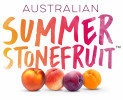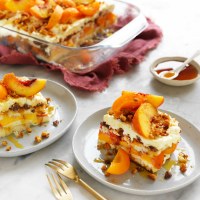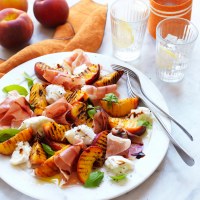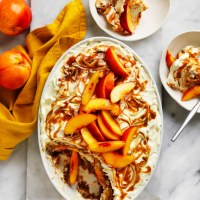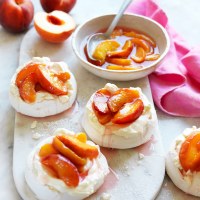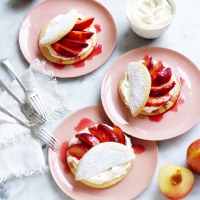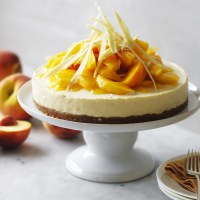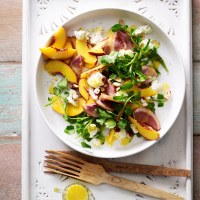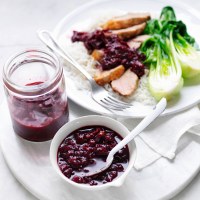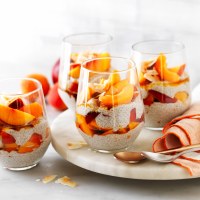What's the difference between clingstone and freestone fruit?
Summertime calls for a fruit bowl laden with beautiful, in-season stonefruit. There’s a huge variety of stonefruits available: yellow and white peaches and nectarines, blood plums and apricots. But have you ever started cutting up a bag of peaches and wondered, “why do some peaches stick to the pit?”. That’s because it’s a clingstone fruit. There are clingstone and freestone varieties of each fruit. This is the low down on the difference between them and how to use them.
The difference between clingstone and freestone fruit
Peaches, nectarines, plums and apricots all come in clingstone and freestone varieties. Clingstone fruits have pits that cling to the flesh of the fruit. If you cut a clingstone peach in half, you will find it difficult to pull the two halves apart and separate the flesh from the stone. Freestone fruits have a pit that is not attached to the flesh. When you cut a freestone peach in half, it will come away from the flesh easily.
What does semi-cling mean? What does semi-freestone mean?
Semi-cling, semi-clingstone or semi-freestone all mean that the fruit is between clingstone and freestone. They are hybrids of clingstone and freestone fruits, so the pit is attached to the flesh but is slightly easier to remove than a true clingstone fruit.
What are freestone fruits good for?
Freestone fruits are great for eating out of hand or cooking. Since it’s quicker and easier to prepare lots of freestone fruits, many people prefer using them to make recipes such as pies, preserves and poached fruits. They are also easier to cut into even slices for salads and dessert toppings. If you make the Layered Stonefruit Tart recipe by Australian Summer Stonefruit, it would be better to use freestone fruits to ensure clean cuts for that beautiful starburst arrangement.
What are clingstone fruits good for?
Clingstone fruits are perfect for eating out of hand and also work well in cooked dishes, although they can take a little longer to prepare. Some clingstone fruit varieties are considered more tasty or juicy than their freestone counterparts, so they are sought out for preserving or baking. In a recipe where the fruit is broken down, like in the recipe for Healthy Plum Slice, you could use a clingstone fruit since you don't need to worry about how the fruit is presented.
How can you tell if a fruit is freestone or clingstone?
Unfortunately, there’s no way to tell if a fruit will be clingstone or freestone by looking at the outside. Other than slicing the fruit open, the easiest way to know is by asking your grocer what they have in stock.
Now that you know the difference between clingstone and freestone fruits, get your hands on some juicy summer peaches, nectarines, plums and apricots, find out how to store them properly for optimal enjoyment, and try out some of the delicious recipes below!
GET THE RECIPE: Mini pavlovas with poached peaches by Summer Stonefruit
Gorgeous fresh peaches are made even more vibrant and juicy with a quick poach. Spooned on top of classic Aussie meringues, this luscious dessert will steal the show.
GET THE RECIPE: Healthy Plum Slice by Summer Stonefruit
This fruity, oaty snack is full of wholegrains and energy-packed seeds. Delicious any time of the day for a quick pick-me-up.
GET THE RECIPE: Classic Apricot Chicken by Summer Stonefruit
This well-loved family meal all comes together in one pot! The sweetness of the apricots makes a delicious pairing with savoury chicken and a hit of warming Moroccan spices.

